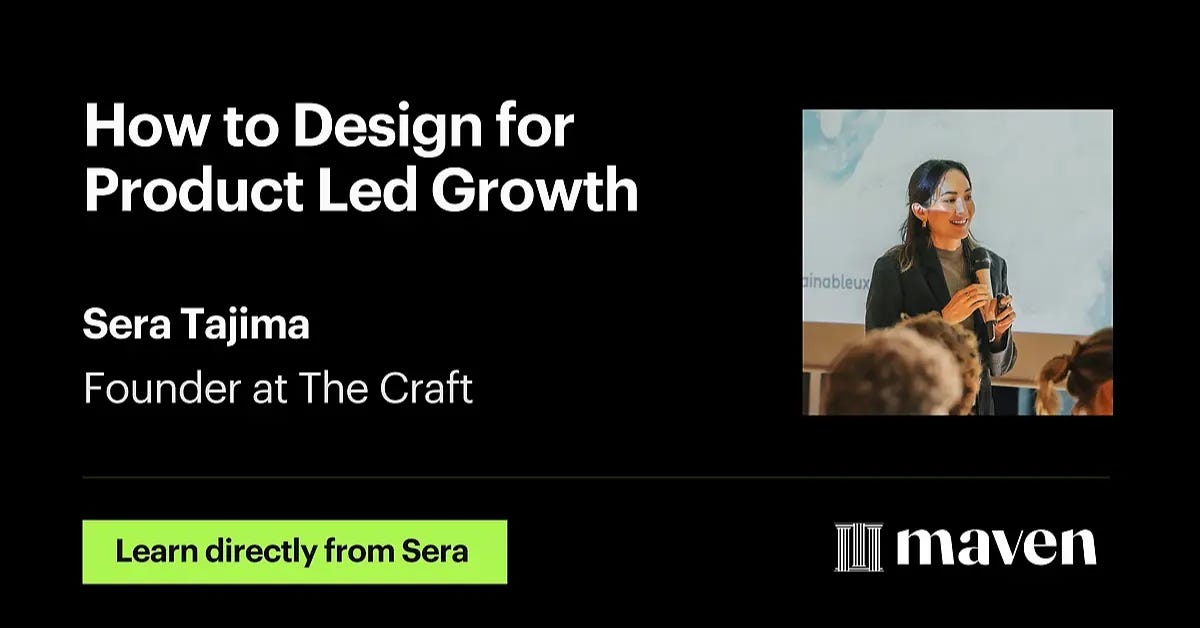3 Stages of Product Market Fit: Case Study From Early Stage Startup Gable
✨ NEW✨ Case Study from Gable, B2B SaaS Data Infrastucture
Read Time: 6 mins
Hi friends! I’m trying something new with the Wednesday deep dives. I’ve been thinking about how I can provide you with more value. That means the Wednesday newsletter will be a little simpler and paid subscribers will get my audio version of the newsletter, advanced resources like templates, frameworks, and PDFs, complete archive access, and the ability to comment. Read more here.
🎙️ Scroll to bottom for my audio reading.👇🏽
(You can also change the reading speed)
Announcements
March 7, 2025 — Join my 45 min lightning session on PLG this Friday. (Free)
March 10, 2025 — Last chance to join the growth design cohort for 2025.
(I have some larger time commitments coming up so I’ll run the cohort about 1 more time this year following next week’s cohort.)
3 Tips for PMF
The biggest mistake startups make is this:
They build something that no one wants.
Why?
They didn't understand Product market fit (PMF).
Ran Liu, Head of Design at early stage startup Gable, shared real company case studies on pre-growth and growth. Today I’ll share my top 3 takeaways with you.
Ran has worked at companies like Marketo, Amplitude, Adobe, Shopify and she even recruited me to work at Webflow.
Here's how to use growth tactics in finding PMF when you don’t have much data, inspired by Ran. ✨
1. Start with WHO, not WHAT 💡
→ Start with market data
→ Define your target customer with crystal clarity
→ Talk to them before building (a good practice is to create a slack group)
→ Start with qualitative data from your target customers
2. Build Smart, Not Fast 🧰
→ Ditch the HiPPO effect (Highest Paid Person's Opinion)
→ Test concepts before writing code - saves you a headache
→ Convert early adopters into paying customers
→ Document everything: objections, requests, usage patterns
→ Set clear success metrics before development begins
3. Hit the Mark Before Scaling 📈
→ Hold off on scaling until your retention curves show stickiness
→ A/B test your value proposition in specific tests (e.g. language)
→ Track the metric that proves you're solving the problem
→ Look for usage patterns that show true product dependency
→ Try the Sean Ellis Test (If 40% of users are disappointed they can no longer use your product)
Gable Case Study
The collaboration, communication, and change management platform for data teams operating at scale
3 Levels to PMF
Problem Fit — Customers resonate with the problem
Problem Solution Fit — Does your solution solve that problem
Problem Solution Market Fit — Do you have meaningful paying customers, pricing packages, etc.
Gable is at phase 2. Here you need to talk to customers constantly. 🗣️
Show your (potential) customers demos and mocks and figure out what they gravitate towards.
My Recommendation for Showing Customers Mocks:
I’d recommend planning out a clear usability test so your results are meaningful. You want to run each participant through the same task or flow and follow up with the same questions so that you can discern patterns in the data.
How Gable Handles No Usable Data
In this situation, Gable heavily leans on qualitative data. The startup has a slack channel with all of their customers. They’ll gather qualitative data through slack directly and through demos.
They also use market data. The startup is looking for confidence that they are building what the market needs. HiPPO is not representative of the market. Nobody cares what Founders want. 😂 A successful product has statistical significance and is NOT driven by Founder opinions.
Gable runs ads on Facebook to test interest. If people click, they land on a fake domain. This is how Gable tests reactions to the language and visuals represented on the fake website.
My Recommendation for Website Engagement Testing:
Analytics and heatmaps are a great way to gauge interest and see how far people are getting on your landing page.
Ran emphasizes that growth teams should not fixate on quantitative data, you need both — quantitative and qualitative.
Remember: PMF is NOT about releasing as fast as possible.
Speed only works when you are applying your learnings.
Gather quantitative and qualitative data.
Prioritize.
Apply your learnings.
Iterate as fast as possible.
Test it again!
🔥 Want to dive deeper into these strategies and more?
My next Growth Design cohort starts next week.
Learn about PMF, growth, and avoid the costly mistakes product teams make.
Building something that matters? Let's connect. I help founders navigate the path from zero to sustainable growth.
Your Next Steps
Have you found Product Market Fit?
I'd love to hear where you are in your journey:
Which PMF trap are you currently struggling with?
What signals convinced you that you had found PMF?
How are you balancing short-term growth metrics with sustainable impact?
Share your experience in the comments below – I'll personally respond to questions and insights.
Watch YouTube Shorts 🎥
Watch This If You’re Ready to Sustain Success in 2025
3 Ways I Can Help You
Book an Advising Call
For founders seeking sustainable growth. I'll help you conduct meaningful customer discovery, design validation experiments, and build sustainable growth models. Limited monthly spots available. Contact hi@the-craft.io to apply.
Free Mini Growth Design Course
Join hundreds of technologists in learning growth design. Ease into why sustainable growth matters and how to leverage growth thinking with 5 free days of training.
Design for Conscious Product-Led Growth (Live training)
My flagship training distills a decade of experience into proven frameworks now used by teams at Instacart, Ikea, and Adobe. Contact hi@the-craft.io for private workshops.
Get the audio here 👇🏽
Keep reading with a 7-day free trial
Subscribe to Conscious Tech to keep reading this post and get 7 days of free access to the full post archives.









